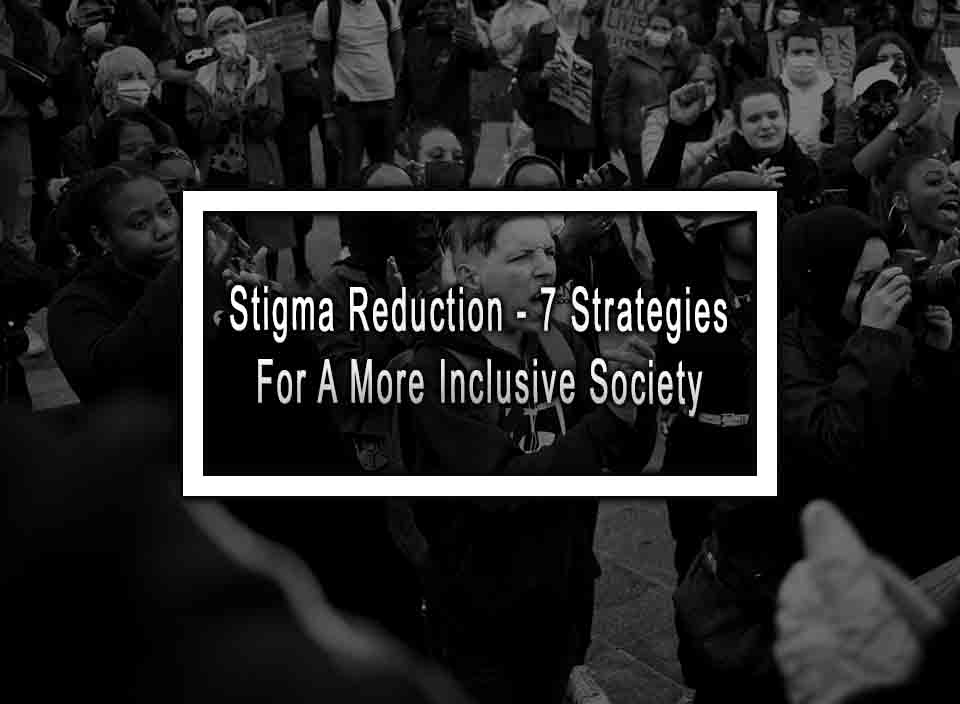Table of Contents
ToggleStigma Reduction: Unleashing a More Inclusive Society
In a society where misconceptions and stereotypes often perpetuate stigmatization, it is crucial to explore effective strategies for stigma reduction. Overcoming societal biases and creating a more inclusive environment leads to greater acceptance, understanding, and empathy. In this article, we will explore seven powerful techniques to combat stigmas head-on, fostering positive change in individuals, communities, and beyond.
1. Promote Education and Awareness
The first step in reducing stigma is to promote education and awareness. Providing accurate and reliable information about stigmatized conditions can dispel misconceptions and challenge stereotypes. Organizations, both online and offline, should actively engage in outreach programs, campaigns, and events to empower individuals with knowledge and foster a culture of openness and acceptance.
2. Foster Empathetic Communication
Open communication is key to reducing stigma. Encouraging honest conversations without judgment creates a safe space for people to share their experiences and challenges. By actively listening, empathizing, and offering support, individuals can break down barriers and cultivate understanding, transforming stigma into acceptance.
3. Engage in Advocacy and Activism
Advocacy and activism play a vital role in challenging societal norms and dismantling stigmas. Individuals and organizations can participate in grassroots movements, raise their voices through social media campaigns, organize awareness events, and collaborate with local and national entities. By becoming advocates for change, we can build a society that embraces inclusivity, diversity, and equal rights for all.
4. Encourage Personal Testimonials
Personal testimonials have a profound impact on reducing stigma. Encouraging individuals with lived experiences to share their stories creates a platform for authenticity, empathy, and connection. These narratives challenge stereotypes and humanize stigmatized conditions, fostering empathy and understanding.
5. Promote Positive Media Representation
Media holds immense power in shaping public perceptions. By advocating for accurate and positive portrayals of stigmatized conditions in movies, TV shows, news articles, and social media, we can dismantle harmful stereotypes and promote a more empathetic society. Encouraging diverse representation and storytelling helps break down barriers and fosters inclusivity.
6. Facilitate Peer Support Networks
Creating safe spaces and support networks for individuals facing stigma is paramount. Peer support groups and online communities provide a sense of belonging, validation, and shared experiences. These networks offer opportunities for connection, understanding, and empowerment, enhancing individuals’ resilience and reducing the negative impact of stigmatization.
7. Implement Anti-Stigma Policies and Legislation
Governing bodies have a crucial role to play in reducing stigma. Implementing anti-stigma policies and legislation ensures legal protections, equal opportunities, and access to resources for marginalized groups. By backing words with tangible actions, we can create a more inclusive society that actively addresses and combats stigmatization.
Conclusion
Breaking down stigma is an ongoing process that requires a collective effort, empathy, and determination. By implementing these seven strategies into our individual and societal behaviors, we can foster the environment needed for stigmatized individuals to thrive. Let’s strive for a future where inclusivity, acceptance, and understanding reign, ensuring a world free from the shackles of stigma. Together, we can build bridges and transform lives.
Stigma Reduction FAQ
Here are the most common questions about stigma reduction.
1. Why is stigma reduction important?
Stigma can lead to discrimination, exclusion, and mistreatment of individuals who are associated with a specific stigma. This can have severe negative consequences on their mental and physical health and overall well-being. Stigma reduction helps to create a more inclusive and supportive society for everyone.
2. Who can benefit from stigma reduction?
Stigma reduction benefits individuals who experience stigma, such as those with mental illness, HIV/AIDS, substance use disorders, disabilities, LGBTQ+ individuals, and others. It also benefits society as a whole by promoting empathy, understanding, and social cohesion.
3. How can stigma reduction be achieved?
Stigma reduction can be achieved through various strategies, including education, awareness campaigns, media representation, advocacy, and promoting contact and interaction between stigmatized individuals and the general public.
4. How can individuals contribute to stigma reduction?
Individuals can contribute to stigma reduction by challenging their own biases and stereotypes, promoting empathy and understanding, speaking out against stigma when they witness it, and supporting organizations and initiatives that aim to reduce stigma. Education and personal reflection are key to creating change at an individual level.












